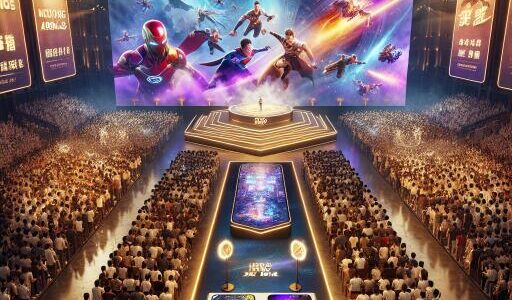Exploring the Surprising Success of Film and TV Adaptations of Plot-Light Video Games
The landscape of video game adaptations has historically been a minefield of hits and misses, but a trend is emerging that suggests a counterintuitive approach: less might actually be more. This is particularly true for video games with minimal plots, which, against odds, have translated better to film and television than their story-rich counterparts.
Consider the iconic character Super Mario, a household name transcending the world of gaming. His leap to the big screen in 1993’s Super Mario Bros movie, however, is a textbook example of how not to adapt a video game. The movie swapped the game’s beloved vibrant landscapes for a gritty aesthetic and morphed its straightforward rescue mission into a labyrinthine plot that lost even the most ardent fans.
Fast forward, and we see a stark contrast in how video game characters are adapted with the recent animated Super Mario movie. This film embraced the whimsicality and absurdity at the heart of the game, staying true to the essence of Mario’s world while introducing it to audiences in a fresh, engaging way. This approach won over viewers, showing that fidelity to the game’s spirit matters more than a complex storyline.
The conversation around video game adaptations was stirred anew with the announcement of a TV adaptation of Among Us, the multiplayer game that became a pandemic-era sensation. The concept seemed audacious, translating a game with minimal narrative and simple, armless cartoon astronauts into a narrative media. Yet, the success of straightforward adaptations like the Super Mario and Sonic the Hedgehog movies lends credibility to the potential for Among Us to captivate audiences in its own right.
There’s a growing consensus that video games with rich, nuanced storylines, akin to The Last of Us or Uncharted, face an uphill battle in adaptation. These games, lauded for their cinematic quality and deep storytelling, often lose their luster when compressed into the formats of film or TV, where the immersive interactivity that enriched the gaming experience is absent.
The Uncharted movie, despite its star-studded cast, exemplifies this challenge. It sought to distill a game celebrated for its expansive narrative and emotional depth into a two-hour film, a task that ultimately diluted the essence that made the game a beloved adventure. This adaptation, alongside others like it, underscores a crucial insight: richly woven video game narratives are at times best left in the realm of gaming.
Conversely, video games characterized by simple mechanics and minimal plots present a unique canvas for filmmakers and scriptwriters. Freed from the constraints of adapting a well-defined narrative, these creators can inject their own vision and storytelling prowess into the project. This blank slate philosophy allows for an adaptation that remains true to the game’s core while exploring new narrative possibilities, as demonstrated by the prospect of an Among Us TV series.
Rather than seeing simplicity as a limitation, the industry is beginning to recognize the potential of plot-light games as a foundation for adaptation. This shift encourages a creative freedom that can lead to innovative and engaging interpretations, catering to both fans of the original games and new audiences alike.
In conclusion, the journey of video game adaptations has shown that the key to success often lies in the unexpected. By embracing the minimalism of games like Super Mario and Among Us, filmmakers can transcend the traditional barriers of adaptation, creating works that captivate and entertain. As we move forward, the template for adaptation may well favor the simple over the complex, heralding a new era of storytelling that celebrates the essence of gaming in all its forms.









